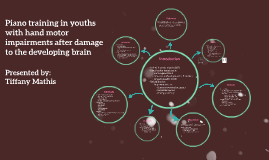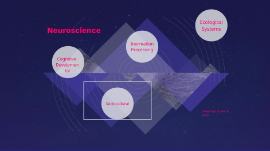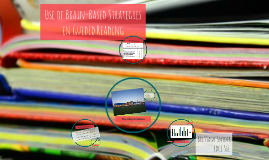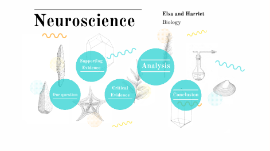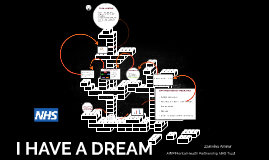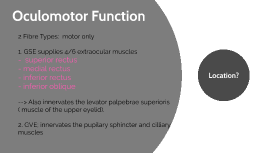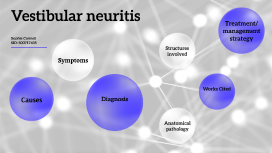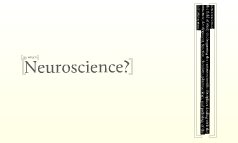Neuroscience Presentation
Transcript: 18 children (8 male, 10 female) between 6 and 16 years old day care center 10- infantile CP 8- other neurodevelopmental disorders Clinical data GMFCS level handedness IQ level clinical diagnosis brain lesions Inclusion impaired motor function with some movement no piano experience good attention Piano training 30-45 minutes twice a week for 18 months 88-key MIDI controller keyboard exercises: pentatonic scale played with right hand repeated with left hand repeated with both hands Experimental tests of motor function Piano tests Box-and-Block test Hand dynamometer test Statistical analysis Box-and-Block test CP group: 5.1 blocks for nondominant hands 3.4 blocks for dominant hands GRMDC group: 0.94 blocks for nondominant hands -0.17 blocks for dominant hands Hand dynamometer test no significant changes Future improvements for the study: use a homogenous group shorter periods of training Conclusions of the study: interaction of different brain areas manual tasks requiring good hand dexterity are improved more than ones requiring hand force Infantile cerebral palsy (CP) Hand motor impairment corticospinal tract other neurodevelopmental disorders impacts quality of life Rehabilitation improvements in: finger movement accuracy keystroke speed timing accuracy Presented by: Tiffany Mathis Results Piano tests average time interval between consecutive strokes remained unchanged mean deviations decreased repeated-measures model two between-subject factors interaction factor two within-subject factors results: significant effect of session no significant effect of group, age, or interaction group x age similar model no significant effect on mean stroke interval Introduction Piano playing fine motor skills audio-visual information with motor control finger and hand movements brain plasticity Study can learning to play the piano improve finger movement in children with hand motor impairments due to brain injury during development? Reference Results Discussion Piano training in youths with hand motor impairments after damage to the developing brain Introduction Discussion regularity improved between consecutive finger strokes during piano exercises study limitations manual skill development heterogeneous origin low number of participants Methods Methods Lampe, R., Thienel, A., Mitternacht, J., Blumenstein, T., Turova, V., & Alves-Pinto, A. (2015). Piano training in youths with hand motor impairments after damage to the developing brain. Neuropsychiatric Disease and Treatment, 11, 1929-1938. http://dx.doi.org/10.2147/NDT.S84090






